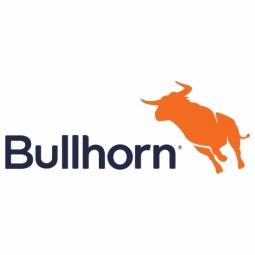Technology Category
- Automation & Control - Human Machine Interface (HMI)
Applicable Industries
- Finance & Insurance
- Mining
Applicable Functions
- Human Resources
- Sales & Marketing
Use Cases
- Leasing Finance Automation
- Time Sensitive Networking
Services
- System Integration
About The Customer
Peoplefusion is a recruitment company based in Newcastle, Australia. Founded in 2007 by Directors Ali Kimmorley and Sally Bartley, the company specializes in various areas, including office support, finance, human resources, sales and marketing, executive, information technology, supply chain, engineering, mining, and manufacturing. Peoplefusion has grown to become a leading recruitment consultancy in the region, known for its professionalism and ability to connect with the best talent. The company was born out of the founders' passion for finding the perfect candidate for the right company, and it has since grown to become synonymous with high standards of professionalism.
The Challenge
Peoplefusion, a Newcastle-based recruitment company, was grappling with the limitations of its legacy system. The server-based solution was slow, ineffective, and lacked the features necessary for Peoplefusion's unique recruitment sector and style. The system was often unresponsive, and the customer service was subpar. As the company grew, it quickly outgrew its software, leading to the need for a change. Peoplefusion needed a solution that was future-proof, optimized for its sectors, and could provide reliable support when needed.
The Solution
Peoplefusion turned to Bullhorn, an international market leader in recruitment software. Bullhorn offered a cloud-based, fast, and customizable system that could meet Peoplefusion's needs. The 24-hour support provided by Bullhorn was a significant deciding factor for Peoplefusion. After implementing Bullhorn, Peoplefusion was able to reduce its front-end administration times by half for many of its key functions, improving workflow speed and freeing up more time for placements. Bullhorn's intelligent integrations eliminated the need for manual candidate uploads, and communications between candidates and clients became easier than ever. Peoplefusion customized the Bullhorn interface to its preferences and implemented additional features through the Bullhorn Marketplace, achieving a tailored system that met all its requirements.
Operational Impact
Quantitative Benefit

Case Study missing?
Start adding your own!
Register with your work email and create a new case study profile for your business.
Related Case Studies.

Case Study
Underground Mining Safety
The goal was to produce a safety system to monitor and support underground mining operations; existing systems were either too simple (i.e. phone line) or overly complex and expensive, inhibiting deployment, and providing little-to-no support in event of an accident. Given the dangerous nature of the mining work environment and the strict regulations placed on the industry, the solution would have to comply with Mine Safety and Health Administration (MSHA) regulations. Yet the product needed to allow for simple deployment to truly be a groundbreaking solution - increasing miner safety and changing daily operations for the better.

Case Study
Mining Firm Quadruples Production, with Internet of Everything
Dundee Precious Metal’s flagship mine, in Chelopech, Bulgaria, produces a gold, copper, and silver concentrate set a goal to increase production by 30%. Dundee wanted to increase production quality and output without increasing headcount and resources, improve miner safety, and minimize cost.

Case Study
Fastenal Builds the Future of Manufacturing with MachineMetrics
Fastenal's objective was to better understand their machine downtime, utilization, quality issues, and to embrace cutting-edge manufacturing technology/process improvement capabilities to bring their team to the next level. However, there was a lack of real-time data, visualization, and actionable insights made this transition impossible.

Case Study
Real-time In-vehicle Monitoring
The telematic solution provides this vital premium-adjusting information. The solution also helps detect and deter vehicle or trailer theft – as soon as a theft occurs, monitoring personnel can alert the appropriate authorities, providing an exact location.“With more and more insurance companies and major fleet operators interested in monitoring driver behaviour on the grounds of road safety, efficient logistics and costs, the market for this type of device and associated e-business services is growing rapidly within Italy and the rest of Europe,” says Franco.“The insurance companies are especially interested in the pay-per-use and pay-as-you-drive applications while other organisations employ the technology for road user charging.”“One million vehicles in Italy currently carry such devices and forecasts indicate that the European market will increase tenfold by 2014.However, for our technology to work effectively, we needed a highly reliable wireless data network to carry the information between the vehicles and monitoring stations.”

Case Study
Joy Mining Systems
Joy equipment faces many challenges. The first is machine integration and control. The business end of the machine has a rapidly-spinning cylinder with 6-inch diamond-studded cutting teeth. It chews through rock at rates measured in tens of tons per minute. The system grinds through the rock in front, creating a rectangular mine tunnel. Hydraulic lifters support the ceiling as the machine moves forward. Automated drills and screws drive 3-ft long screws into the ceiling to stabilize it. The rock and coal fall into a set of gathering "fingers" below the cutting cylinder. These fingers scoop up the rock and coal and deposit it onto a conveyor belt. The conveyor passes under the machine and out the back. A train of conveyor belt cars, up to a mile long, follows the cutter into the mine. The rock shoots along this train at over 400 feet per minute until it empties into rail cars at the end. Current systems place an operator cage next to the cutter. Choking dust (potentially explosive), the risk of collapse and the proximity of metal and rock mayhem make the operator cage a hazardous location.

Case Study
Safety First with Folksam
The competitiveness of the car insurance market is driving UBI growth as a means for insurance companies to differentiate their customer propositions as well as improving operational efficiency. An insurance model - usage-based insurance ("UBI") - offers possibilities for insurers to do more efficient market segmentation and accurate risk assessment and pricing. Insurers require an IoT solution for the purpose of data collection and performance analysis







